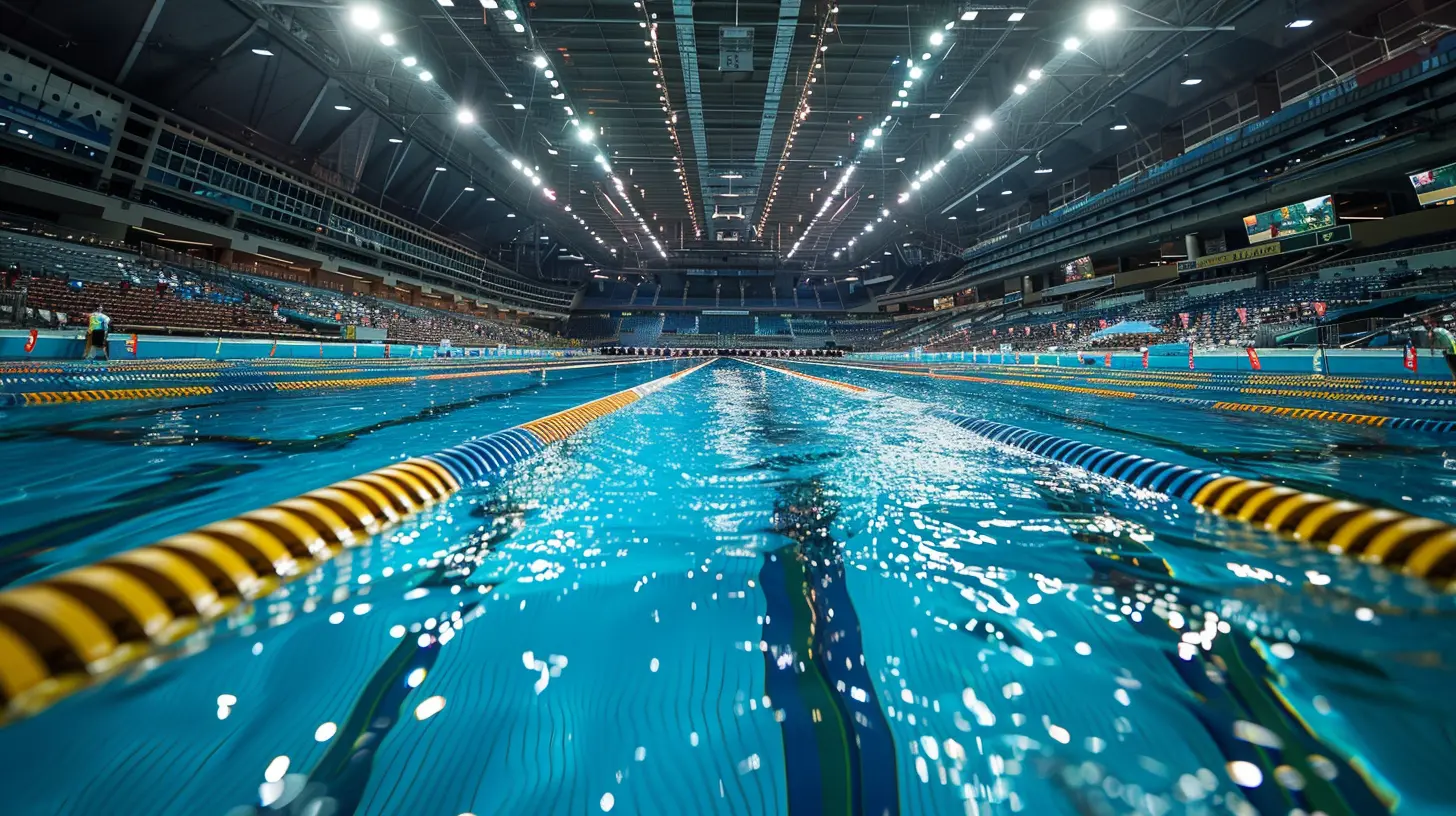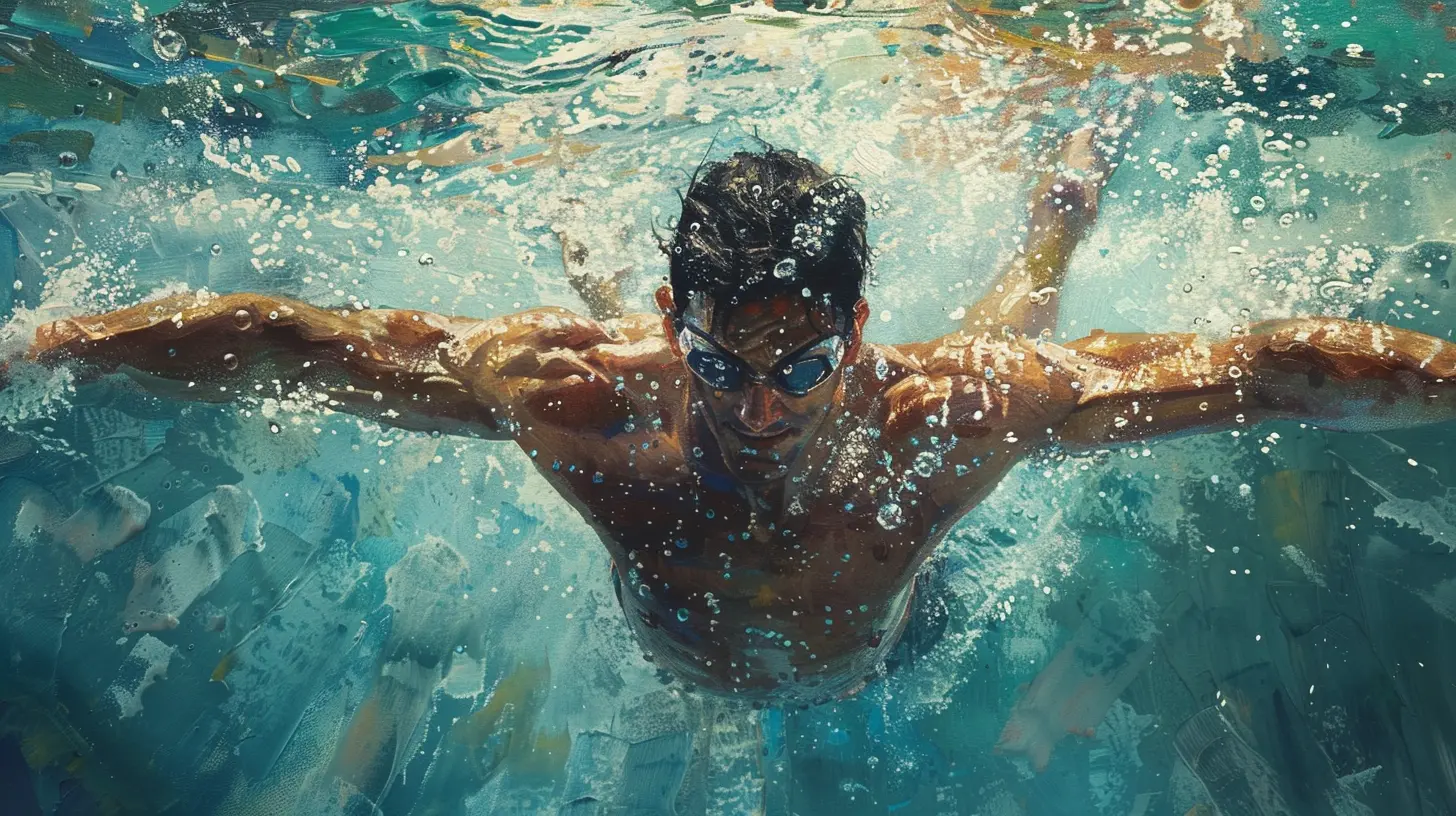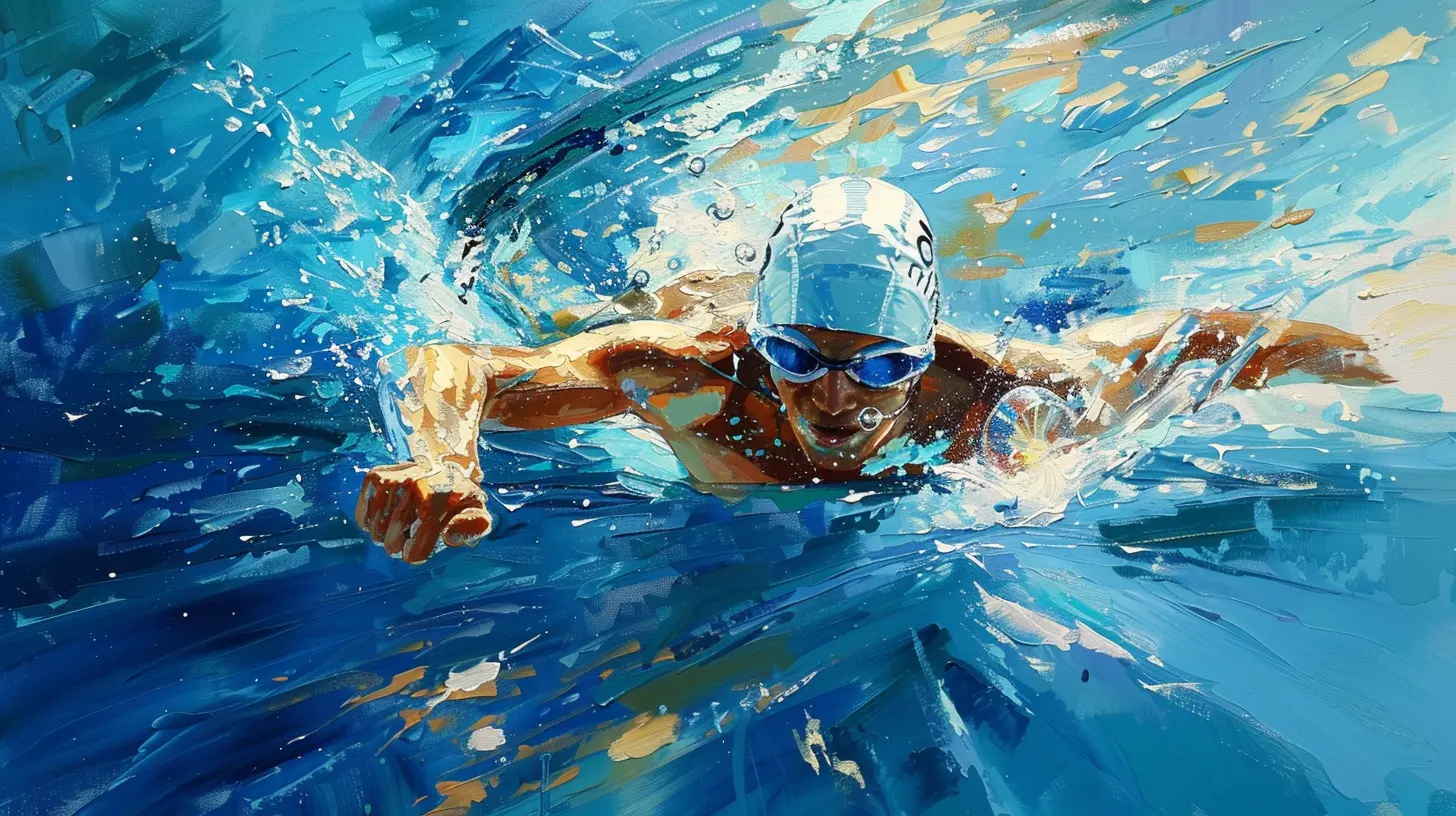The Best Recovery Techniques for Swimmers
17 June 2025
Swimming is one of the most physically demanding sports out there. Whether you're grinding through laps in the pool, powering through sprints, or pushing your endurance in open water, the strain on your body is real. That’s why recovery isn’t just a luxury for swimmers—it’s a non-negotiable part of any serious training plan.
Let’s face it, we all want to swim faster, longer, better. But improvement doesn’t happen in the water alone. It happens in the downtime. It's during recovery that your muscles repair, your body adapts, and your performance levels rise. So what should swimmers be doing after practice or after a race to recover like pros? Keep reading because we're diving deep into the best recovery techniques for swimmers that’ll have you bouncing back stronger every time.
Why Is Recovery So Important for Swimmers?
Before we jump into the techniques, it’s worth asking: Why is recovery such a big deal?When you swim, your muscles undergo stress. They tear (microscopically), fatigue sets in, and your central nervous system takes a hit. Without proper recovery, you're setting yourself up for plateaued performance—or worse, injury. Recovery is like putting fuel back in the tank. You need it to go the distance.
Most swimmers (especially at elite levels) train more than once a day. That’s a lot of impact, even in a low-impact sport like swimming. And here’s a kicker—the water doesn’t wash away fatigue. You’ve got to be intentional about bouncing back.
1. Sleep: The Underrated Superpower
Let’s not overcomplicate things. The #1 recovery tool is something you're already doing—just maybe not enough of. That’s right—sleep.Why Sleep Matters:
Sleep is when the magic happens. Your body releases growth hormone, rebuilds muscle tissue, and resets mentally. You could be nailing your nutrition and doing all the fancy recovery hacks, but if you’re skimping on sleep? It’s like putting a Band-Aid on a broken bone.How Much Is Enough?
Most swimmers need between 8 to 10 hours per night, especially during heavy training periods. And it’s not just about quantity—quality matters, too. Think blackout curtains, cool temperatures, and keeping those devices out of bed.
2. Active Recovery: Keep Moving, Just Slower
Ever notice how stiff you get the day after a brutal workout? That’s your body’s way of saying, “Hey, how about a little movement?”Active recovery helps flush out lactic acid, boosts circulation, and reduces muscle stiffness. And no—this doesn’t mean going hard again. Think gentle, restorative movement.
Great Active Recovery Ideas for Swimmers:
- Light swimming: Slow-paced laps or drills with minimal intensity.- Walking or light cycling: Gets blood flowing without taxing the system.
- Yoga or mobility work: Loosens you up and helps maintain flexibility.
Short on time? Even 15–20 minutes of active recovery can make a big difference.
3. Nutrition: Rebuild From the Inside Out
You wouldn’t drive your car with an empty tank, right? Same logic applies to your body post-swim. Recovery starts with what you put on your plate.Post-Swim Fueling Essentials:
- Protein: Repairs muscle. Aim for 20-30 grams after a tough session.- Carbohydrates: Replenish glycogen stores. Fast-digesting carbs work best right after training.
- Fluids and electrolytes: You’re sweating in the pool, even if you don’t feel it. Rehydrate!
Pro Tip:
Try to eat within 30 minutes of finishing your workout. This is the “golden window” when your body is most primed to absorb nutrients.4. Hydration: More Than Just Water
Here’s a myth that needs busting: Just because you're in the water doesn’t mean you’re not sweating. Swimmers lose a ton of fluids during long sessions, and if you're not staying on top of hydration, you'll feel sluggish and sluggish = slower.Smart Hydration Tips:
- Drink before you're thirsty: Thirst is a lagging indicator.- Add electrolytes: Especially after intense or longer swim sessions.
- Monitor pee color: Sounds weird, but pale yellow is the goal.
Hydration isn't just about feeling good—it's about helping your body recover, regulate temperature, and flush out toxins.
5. Cold Water Immersion (Ice Baths)
This one’s a favorite among elite swimmers, and for good reason. Cold water immersion (aka ice baths) reduces inflammation, decreases muscle soreness, and speeds up recovery.How To Do It:
- Fill a tub with cold water (50–59°F).- Sit in for 10–15 minutes post-training.
- Bonus points for breathing exercises to stay relaxed.
Not keen on full-on ice baths? Even a cold shower can help trigger recovery responses.
6. Foam Rolling and Self-Myofascial Release
Ever feel those tight knots in your back, shoulders, or legs after a workout? That’s where foam rolling comes in hot.Rolling out your muscles helps break up adhesions (tight spots in muscle or fascia), increases blood flow, and improves mobility.
Foam Rolling Tips for Swimmers:
- Roll slowly across muscle groups: traps, lats, quads, hamstrings.- Spend extra time on tight or tender areas.
- Don’t overdo it—1–2 minutes per area is plenty.
Think of it as giving your muscles a DIY sports massage.
7. Stretching: Simple, But Effective
Stretching isn’t just for warming up—it plays a huge role in recovery too. Post-swim static stretching helps elongate muscles, improve flexibility, and reduce that “tight” feeling.Stretching Protocol Post-Swim:
- Focus on major muscle groups: shoulders, hamstrings, hips, calves.- Hold each stretch for 20–30 seconds.
- Don’t bounce—move slowly and breathe deeply.
A daily post-practice stretching routine can work wonders over time, especially in a sport that demands so much shoulder mobility.
8. Massage Therapy: Not Just a Luxury
If you've ever had a deep tissue massage after swim camp, you know just how game-changing it can feel. Massage therapy does more than just feel good—it increases circulation, breaks down scar tissue, and aids muscle recovery.Best Time for Massage?
- After intense training blocks.- During deload or taper weeks.
- As part of your regular recovery routine (once every 1–2 weeks is ideal).
Can’t afford regular massages? Use massage guns, foam rollers, or even lacrosse balls as alternatives.
9. Compression Gear: The Recovery Secret Weapon
You’ve probably seen swimmers wearing those tight-looking socks or sleeves. No, it's not just a fashion statement. Compression gear can actually help reduce muscle soreness and boost circulation.Wearing compression post-training helps your body push fluids back toward the heart, supporting faster recovery.
When to Wear Compression:
- Immediately after training.- During post-travel recovery (especially useful at swim meets).
- Overnight (some people swear by sleep compression leggings).
10. Mental Recovery: Don’t Sleep on Your Brain
Let’s take a step back. Physical recovery is huge—but mental recovery can be just as important.Burnout is real in swimming. The early mornings, the grind, the races—it all takes mental energy. So giving your brain a break is a big deal.
Great Mental Recovery Techniques:
- Mindfulness meditation: Just 5–10 minutes per day can work wonders.- Visualization: Picture your best race or perfect turns.
- Journaling: Track training moods, progress, and setbacks.
Sometimes turning off your brain helps you turn on your performance.
11. Contrast Showers: Hot-Cold Therapy DIY Style
If ice baths aren’t your thing, an easier approach is contrast showers. It’s exactly what it sounds like—alternating hot and cold water to stimulate circulation.How It Works:
- Start with hot water for 1–2 minutes.- Switch to cold for 30 seconds.
- Repeat 3–4 cycles.
This method "pumps" your blood vessels, helping reduce soreness and stiffness.
12. Rest Days: Yes, You Actually Need Them
Don't fall into the trap of thinking more is better. Sometimes, doing nothing is doing something.Rest days allow your body and nervous system to reset. Skipping them often leads to fatigue, injury, or mental burnout.
What Makes a Good Rest Day?
- Zero structured workouts.- Gentle walks or stretching if needed.
- Time to recharge mentally and physically.
Remember, recovery is where progress happens. Treat rest days as part of your training—not a loophole.
Final Thoughts: Recovery Isn’t Optional
If you’re serious about swimming—whether you're chasing Olympic dreams or just trying to beat your personal best—you’ve got to respect the recovery game. Training breaks you down; recovery builds you up.From sleep and nutrition to massage and mental breaks, the best recovery techniques for swimmers aren’t just about feeling good—they’re about swimming better, longer, and injury-free.
So next time you’re tempted to skip stretching or cut sleep short, ask yourself: Am I working harder, or am I working smarter?
Because in swimming, how you recover defines how you perform.
all images in this post were generated using AI tools
Category:
SwimmingAuthor:

Everett Davis
Discussion
rate this article
2 comments
Theo Abbott
Great insights on recovery techniques! Incorporating methods like active recovery and nutrition can significantly enhance swimmers’ performance and overall well-being. Keep it up!
June 20, 2025 at 11:19 AM

Everett Davis
Thank you for your positive feedback! I'm glad you found the insights helpful. Happy swimming!
Tenley McCarty
Great article! I appreciate the emphasis on diverse recovery techniques. Incorporating methods like active recovery and proper nutrition can greatly enhance performance. Also, consider exploring the mental aspect of recovery—it's just as vital for overall progress.
June 17, 2025 at 4:54 AM

Everett Davis
Thank you for your feedback! I completely agree that mental recovery is crucial and will definitely consider incorporating that aspect in future articles.


